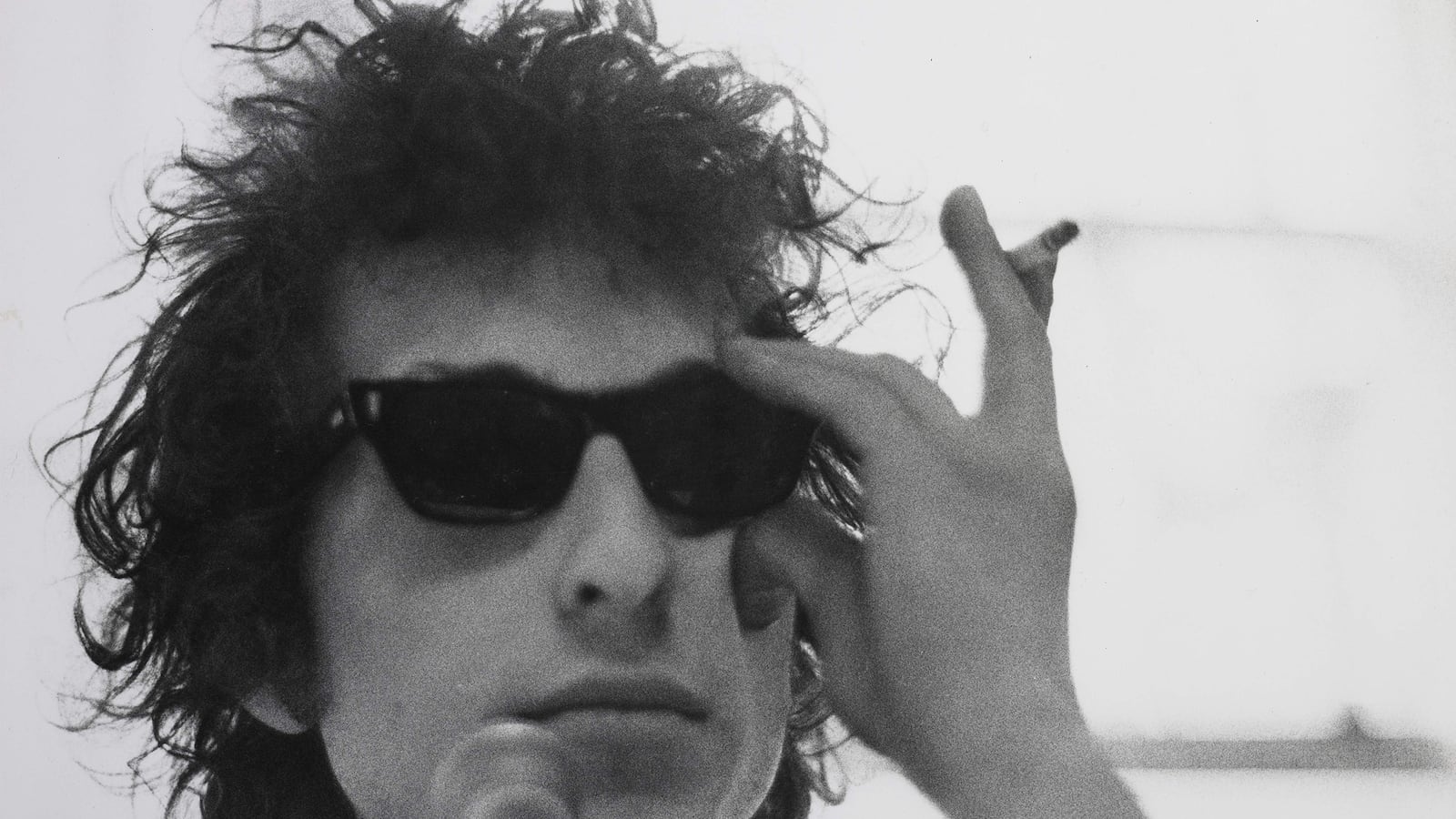This week Columbia will release a six-CD package of alternate takes, outtakes, rehearsals, and false starts from the Bob Dylan recording sessions that produced Bringing It All Back Home, Highway 61 Revisited, and Blonde on Blonde.
Call this overkill if you must, but it’s my kind of overkill.
Official title: The Cutting Edge 1965-1966: The Bootleg Series Vol. 12. That “Deluxe” [the label’s designation] version is a boxed set that includes copious liner notes, track annotations, and a hardbound book of photographs documenting the recording sessions and concerts from the period.
This art director’s wet dream is ridiculously priced somewhere north of $100. Why they couldn’t just issue a more affordable bare-bones set with the music and the liner notes is a mystery, but at least there’s a much more reasonably priced two-CD “Best Of” version containing a truncated set list that still conveys a lot of the do-it-wrong-until-you-do-it-right ethos that characterizes the larger version.
It would take a contrarian’s contrarian to deny that the music on the three albums that are the focus of this project is as good as anything Dylan—or anyone else—has ever produced. And he did it all in a year and change equally memorable for the legendary tours in which he controversially embraced rock and roll and had his first couple of top ten hits.
You can hear his metamorphosis from folkie to rock star most clearly on Bringing It All Back Home, which has one side that’s mostly rock and one that’s still mostly unaccompanied acoustic. By the time he recorded Highway 61 Revisited five months later, he seemed completely comfortable playing with a band. And eight months after that he polished off the incomparable Blonde on Blonde (pop music’s first double album, according to the liner notes of this new collection).
What you don’t get on any of those albums is any sense of Dylan’s creative process. The masterful performances sound so assured and inevitable—an inevitability that five decades of listening has only cemented in the listener’s head, this listener’s anyway.
In that light, the newly released Cutting Edge tracks act like a box of dynamite that explodes our old ways of hearing these songs. There’s fumbling and laughter and foolishness (drums on “Mr. Tambourine Man,” “Like a Rolling Stone” in waltz time), but more than anything there’s the sound of an artist working through multiple versions of material, often with completely different sets of musicians on different dates, until he hears a recorded version that syncs with what he heard in his head.

I can't say exactly what you learn from listening to three or four takes that inch toward the recorded version of, say, “Stuck Inside of Mobile With the Memphis Blues Again,” but it sure is fascinating, like unlearning what you think is a song or the way it goes. These versions are often so different that at last you can begin isolating the song itself, tearing it away from that record that’s burned itself into your brain.
It should be said that the material selected for inclusion is in no way second-rate or for nerds only. Almost all of it stands on its own. If the four versions of, say, “It Takes a Lot to Laugh, It Takes a Train to Cry” are not quite the equal of the sublime version that appears on Highway 61, (the takes selected for the original albums were indeed almost always the right choices), that doesn’t mean that the versions not used are necessarily inferior. They’re just different. And if anything they make the final version, the one we’re familiar with, seem even more extraordinary.
Plus, all these extra versions give you more chances to hear the truly sublime musicianship of Mike Bloomfield, Robbie Robertson, and all the other studio musicians whose contributions to these recordings were so crucial to their creation.
Very few musicians are brave enough to consistently hire musicians who challenged him the way Dylan did.
Of course, in the nerd-alert category, there is the single CD out of the six that’s devoted to the recording of “Like a Rolling Stone.” Even here, though, I would defend the overkill. If you’re going to drill down on a tune, what better candidate? Here’s a rare chance to hear a masterpiece in the making, with each musician working out his part, while Dylan phrases and rephrases, rewrites lyrics on the fly, and everyone shifting and shaping and then doing it again until the song we know emerges. And after hearing the track that isolates just Mike Bloomfield’s heart-melting guitar part, all I can say is, bring it on.
Casual fans may want to take a pass on this project. But if you’ve lived with these albums as long as I have (and yeah, I used to own one of the early versions with the Claudia Cardinale photo on the inner sleeve that she made them take out in later editions), or if you’ve ever just wondered how these great recordings happened, you’ll not only want the Cutting Edge box, you’ll need it. That’s what real art does to you.





